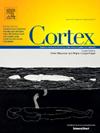Atypical cortical regional homogeneity observed in graphene-colour synaesthesia and its subtypes
IF 3.3
2区 心理学
Q1 BEHAVIORAL SCIENCES
引用次数: 0
Abstract
Graphene-colour synaesthesia is a phenomenon where individuals associate specific graphemes with particular colours, with two common subtypes: projector and associator. This study investigates the association between resting-state regional homogeneity (ReHo) and projector- and associator-type synaesthesia, and the behavioural significance of these ReHo abnormalities. 75 synaesthetes with varying projector and associator scores completed a diverse range of psychological measures and underwent resting-state functional MRI (rsfMRI) scans. Cortical ReHo images were extracted from preprocessed rsfMRI scans and analysed using the VertexWiseR R package. Vertex-wise ReHo analysis revealed that ReHo scores of the left caudal middle frontal negatively associated with associator-type synaesthesia scores, while ReHo scores of the left superior parietal, left superior frontal, left pars orbitalis and right precuneus negatively associated with projector scores. These ReHo clusters correlated with domains of emotional and tactile imagery (Plymouth Sensory Imagery Questionnaire) across both subtypes. Projector-score associated clusters were associated with auditory, gustatory, and visual imagery, as well as heightened avoidance behaviours. Meta-analytical image decoding analyses suggested that the clusters associated with both projector- and associator scores were associated with memory and executive function. Overall, our analyses revealed that projector and associator synaesthesia are supported by distinct yet overlapping patterns of ReHo within higher-order cognitive and perceptual brain regions.
在石墨烯色联觉及其亚型中观察到非典型皮质区域均匀性
石墨烯-颜色联觉是一种现象,个体将特定的石墨素与特定的颜色联系在一起,有两种常见的亚型:投射者和联想者。本研究探讨了静息状态区域同质性(ReHo)与投射型和联想型联觉之间的关系,以及这些ReHo异常的行为意义。75名具有不同投射和联想分数的联觉者完成了一系列不同的心理测量,并进行了静息状态功能MRI (rsfMRI)扫描。从预处理的rsfMRI扫描中提取皮质ReHo图像,并使用VertexWiseR R软件包进行分析。ReHo点分析显示,左侧尾侧中额叶的ReHo评分与联想型联觉评分呈负相关,而左侧顶叶上、左侧额叶上、左侧眶部和右侧楔前叶的ReHo评分与投影仪评分呈负相关。这些ReHo集群与两种亚型的情感和触觉意象域(普利茅斯感觉意象问卷)相关。投影仪评分相关的群集与听觉、味觉和视觉意象以及高度回避行为有关。元分析图像解码分析表明,与投射者和联想者得分相关的群集与记忆和执行功能相关。总的来说,我们的分析表明,投影和联想联觉是由高阶认知和感知脑区中不同但重叠的ReHo模式支持的。
本文章由计算机程序翻译,如有差异,请以英文原文为准。
求助全文
约1分钟内获得全文
求助全文
来源期刊

Cortex
医学-行为科学
CiteScore
7.00
自引率
5.60%
发文量
250
审稿时长
74 days
期刊介绍:
CORTEX is an international journal devoted to the study of cognition and of the relationship between the nervous system and mental processes, particularly as these are reflected in the behaviour of patients with acquired brain lesions, normal volunteers, children with typical and atypical development, and in the activation of brain regions and systems as recorded by functional neuroimaging techniques. It was founded in 1964 by Ennio De Renzi.
 求助内容:
求助内容: 应助结果提醒方式:
应助结果提醒方式:


